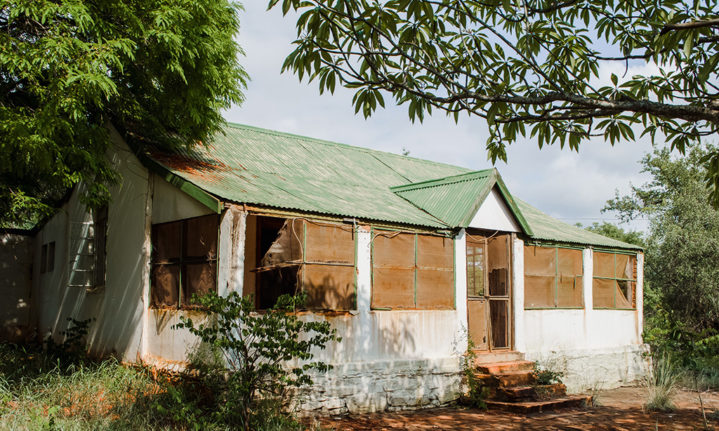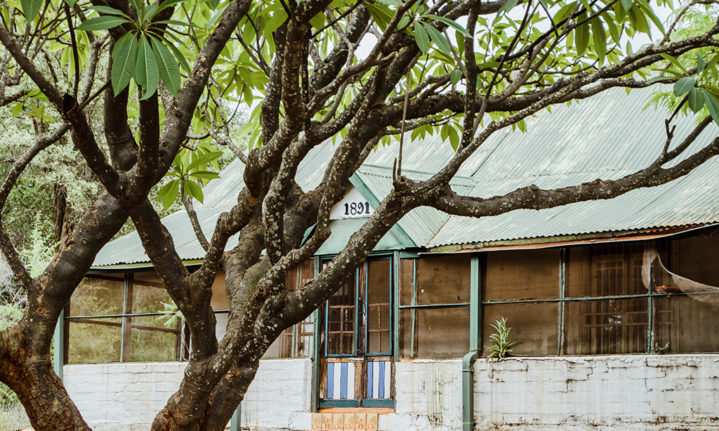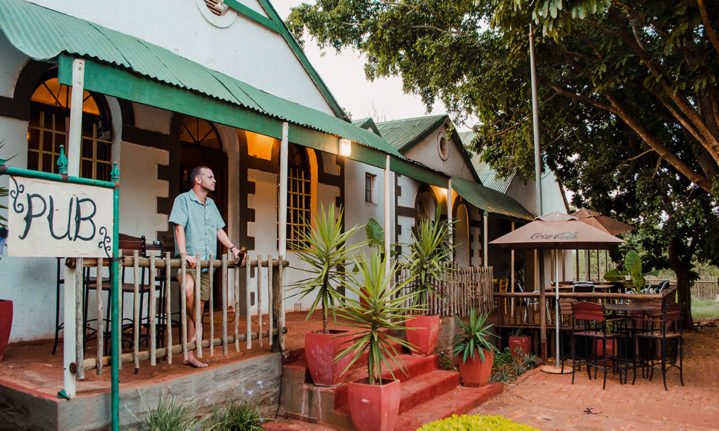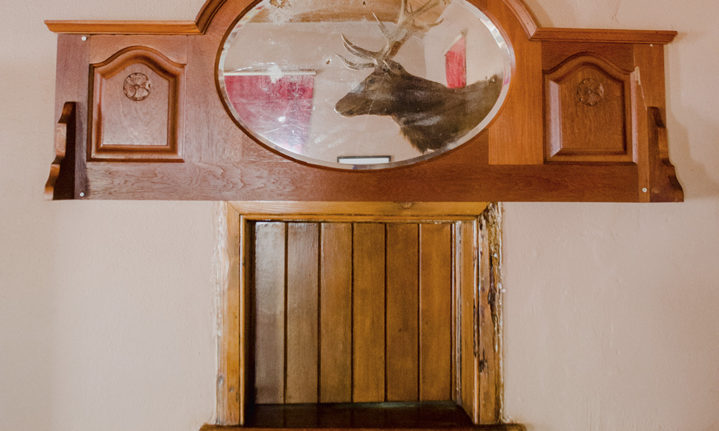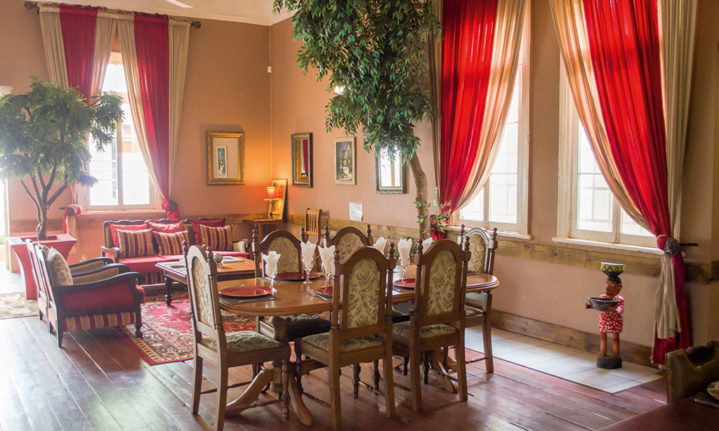In south-eastern Limpopo lies a town where the truths are as strange as the legends, where spooks and snakes rule supreme, and where the dead outnumber the living.
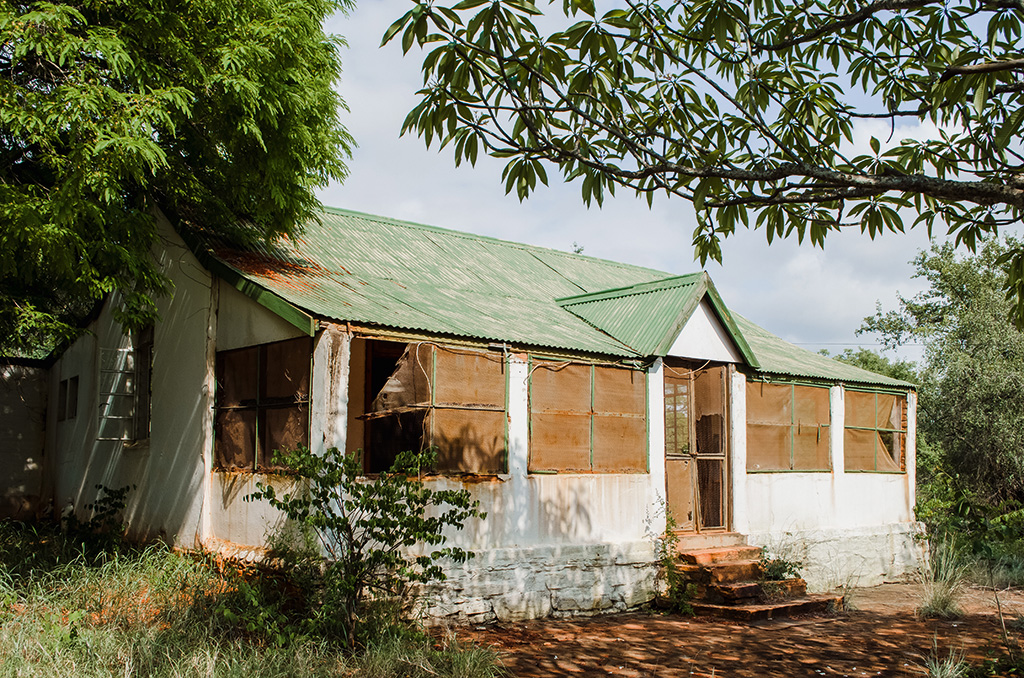
The doctors and nurses’ quarters have been left as they were, a stark reminder of the harsh conditions Leydsdorpers lived under.
I’d driven the R71 a hundred times before I ever noticed the sign. Lowvelders know to obey the 60km/h speed limit through the tiny town of Gravelotte, and watch for cops under the acacia trees. That could be the reason so many people bypass Leydsdorp, an even smaller town 10 kilometres to the south-west.
I was met at the Leydsdorp Hotel by Andries Masete, the hotel’s jack-of-all-trades who carries your bags and takes your drinks order at the bar. After a scorching day driving around with a broken aircon, my small room in the hotel felt like air-conditioned heaven.
Two khaki-clad locals eyed me as I ordered a Black Label. In a town where the last census tallied six, strangers tend to stand out.
But the town wasn’t always so poorly populated – 130 years ago, Leydsdorp joined the list of booming mining towns after gold was discovered in the Murchison range in 1888. The Selati Goldfields were established and shortly thereafter came the little town of Leydsdorp, named for Willem Johannes Leyds, the secretary of state.
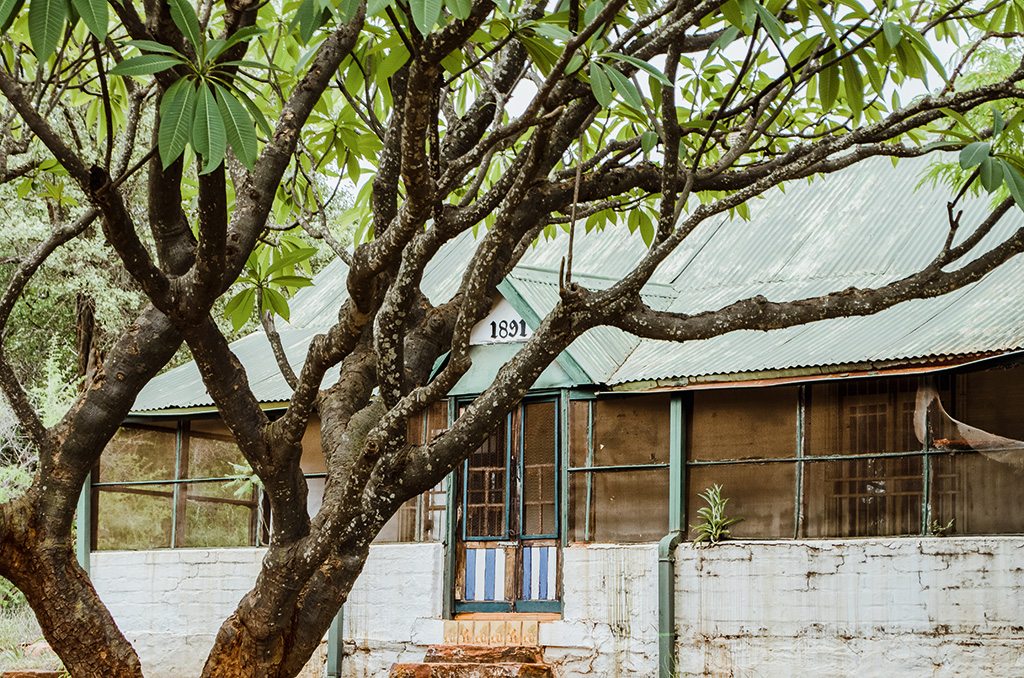
Leydsdorp was described as a fever trap, as malaria claimed the lives of thousands. Old screen nets, which proved useless against the relentless mosquitos in the town, still hang in the frames of the doctors’ quarters.
By 1890, Leydsdorp had attracted hundreds of gold-sniffers, and as the town grew, so did the tales of debauchery and mischief. Miners by day, hooligans by night, characters like Mica Bill and Paraffin Joe fuel local legend. Then there was poor Sandy, a local chap who haunted the hotel bar in life, and in death. The story goes that when Sandy died, he was ensconced in a make-shift coffin to be carried to his burial site. Somehow it went unnoticed that he fell out along the way, or more likely was dropped on the side of the road by inebriated pallbearers. Later that day his body was retrieved and, after being propped up in his usual corner, he was moved to a cooler place, destined to spend his first night of the afterlife in the cellar beneath the bar. Some say he never left.
Leydsdorp and the surrounding farms were a favourite hunting spot of Boer president Paul Kruger. He had a house right next to the hotel, with a green roof and a wrap-around verandah (now hotel staff quarters). On one of his hunting trips, he was faced with a dilemma. Kruger was called upon to sign official documentation which could only be signed in a city. Reluctant to cut short his trip, and in true ’n-boer-maak-’n-plan mode, he declared Leydsdorp an official city for a day, on 1 October 1890.

Visitors are permitted to climb one side of this ancient baobab, and enter the cavernous hollow which was once an informal pub called the Murchison Club.
By the time the sun had set, my partner and I were the only patrons in the restaurant, and indeed the only guests at the hotel. Fiery-necked nightjars trilled as we settled in for the night, full from our supper of hamburgers and beer. I lay in bed feeling grateful for the aircon as I imagined what a summer night in Leydsdorp must have been like a hundred years ago.
‘I could hardly bring myself to leave it (Tzaneen) and go down into the fever country and the gold mines of the Murchison Range,’ wrote Hans Merensky, renowned geologist and prospector in his diary in 1904. ‘Leydsdorp, the main village in this area, is an absolute fever trap. They call it the town where there are more dead in the cemetery than living in the streets.’

Despite the pleading sign, the Leydsdorp baobab attracts visitors from near and far. The tree’s keeper is also a local legend and attracts a fair number of visitors himself.
A few kilometres down the road stands Leydsdorp’s defining feature – a 2 000-year-old baobab tree. Its keeper, local pensioner Swanie Swanepoel, has many yarns to tell. ‘You know, this baobab was a bar many years ago, they called it the Murchison Club. A dozen men could fit inside the hollow trunk.’
These days, Swanie can’t sell you a beer but he did sell us an ice-cold Coke. As I sipped mine, he told me of the terrible drought and tsetse-fly-infested veld; of the malaria and blackwater fever that kept filling the cemetery up all those years ago.
‘You know, they even tried getting zebras to pull the carts and wagons after the cattle and horses had died of disease. They weren’t so good at it,’ he said.
‘I think there must have been 5 000 residents, and about 3 000 of them died of malaria,’ Swanie told me.
Next morning, after my partner had left early to deal with an unexpected work issue, I was perched, alone, at the head of a table set for six for breakfast. But I was not, in fact, truly alone. I was joined by a lioness, frozen in a vicious pose as if attacking the lounge suite in the corner of the room. In the opposite corner, a similarly glassy eyed caracal, and to my left, a bushpig. ‘It was abandoned just like this,’ Margaret Locke, the hotel manager tells me. ‘Tables set and everything.’

These days the hotel pub is a popular stop for thirsty cyclists, where once it was a destination after a long journey by oxwagon.
Called Dickinson Bro’s Hotel in a previous life, the Leydsdorp Hotel has been restored to a degree of its former glory, complete with the original bar counter, where Kruger would have rested his elbows. Despite having gone missing for a few years, and with an initial or two scratched into the wood, the bar counter is in perfect condition. When the hotel was abandoned in the 1990s, a local farmer retrieved it and kept it in storage. When Kobus and Kodri Smuts purchased the hotel in 2015, he returned it to its rightful home, and empty glasses slammed upon it once again.
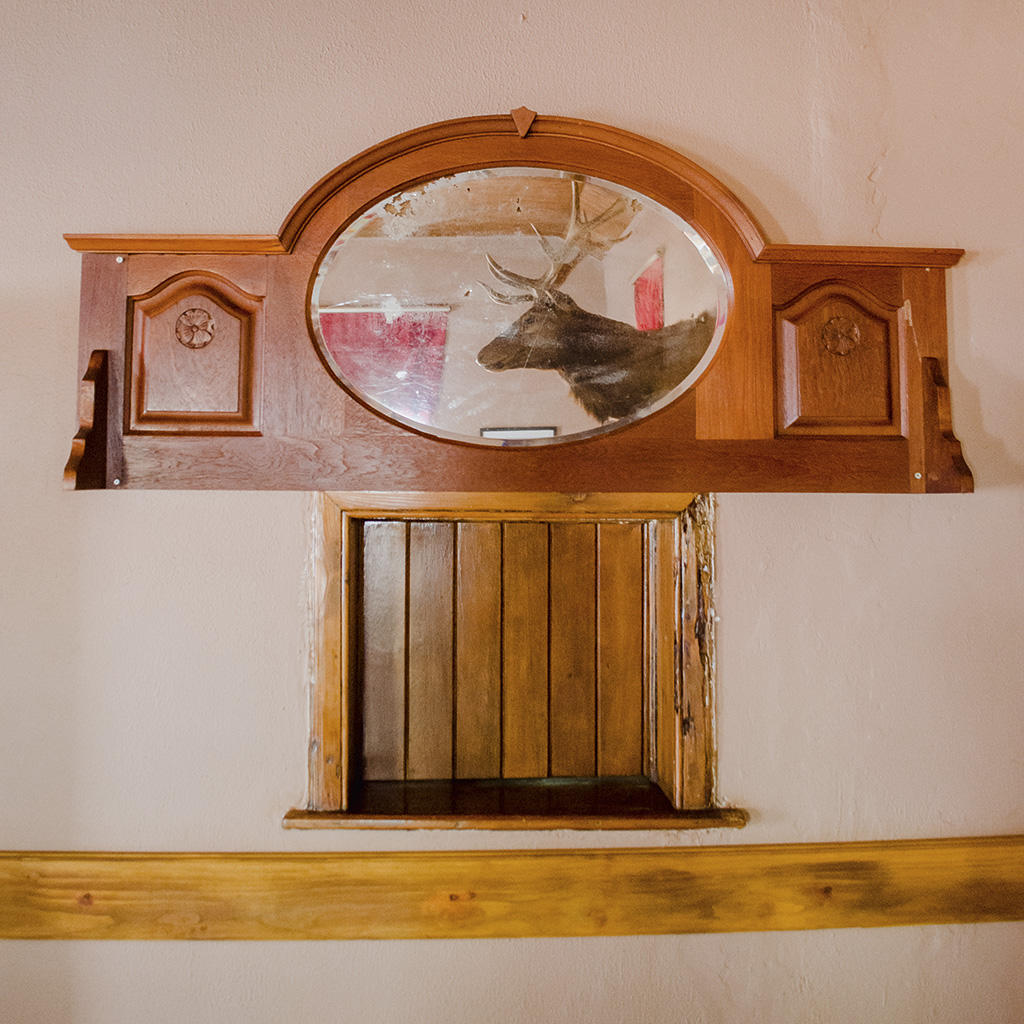
Leydsdorp was a popular hunting destination from the start, and trophies still line the walls of the snooker room. This easy-access hatch was used to serve beer after church services.
In what is now the snooker room – once the town’s makeshift chapel – hangs a moose bust of indeterminate origin. Between the bar and this room is a small hatch in the wall, and legend has it that the priest doubled as a bartender, his morning church services flowing seamlessly into boozy Sunday afternoons.
Curious to explore the village, I stepped out after breakfast, as Margaret called to me ‘watch out for snakes!’ This is not an uncommon warning in these parts but I soon discovered it was one worth heeding. Two stripe-bellied sand snakes, a cobra (I didn’t pause to identify it further) and an olive grass snake later, I was feeling rather vulnerable in my open sandals.
I stopped to examine the doctors’ and nurses’ quarters, and a chill ran down my spine as I peered through the broken windows. In an isolated town where malaria and blackwater fever overwhelmed the population, a more thankless job I could not imagine.

Leydsdorp was a popular hunting destination from the start, and trophies still line the walls of the snooker room. This easy-access hatch was used to serve beer after church services.
As I walked the deserted roads, I imagined what it must have been like when, on top of venomous snakes and malaria, Leydsdorpers would have had to be wary of big game, too.
‘As far as I could make out, there were more wild animals than humans about,’ wrote Merensky. ‘One day an elephant walked down the one and only street, and nobody took the slightest notice. They told me it was not unusual to look out of your window in the morning and see a lion or a leopard sitting in the garden…’
Life in Leydsdorp was hard but the people were harder. On the information board on the hotel’s verandah, is a picture of four Leyds- dorpers with a lioness at their feet, shot virtually at the hotel’s front door. The women of the town, it is said, were more likely to ‘shoo away lions with a flick of their aprons’.
The town once consisted of no fewer than eight bars, some trading stores, a hospital, a mortuary, a police station, a butchery, a bakery and a magistrate’s office. There was even a printing house, which published The Leydsdorp Leader.
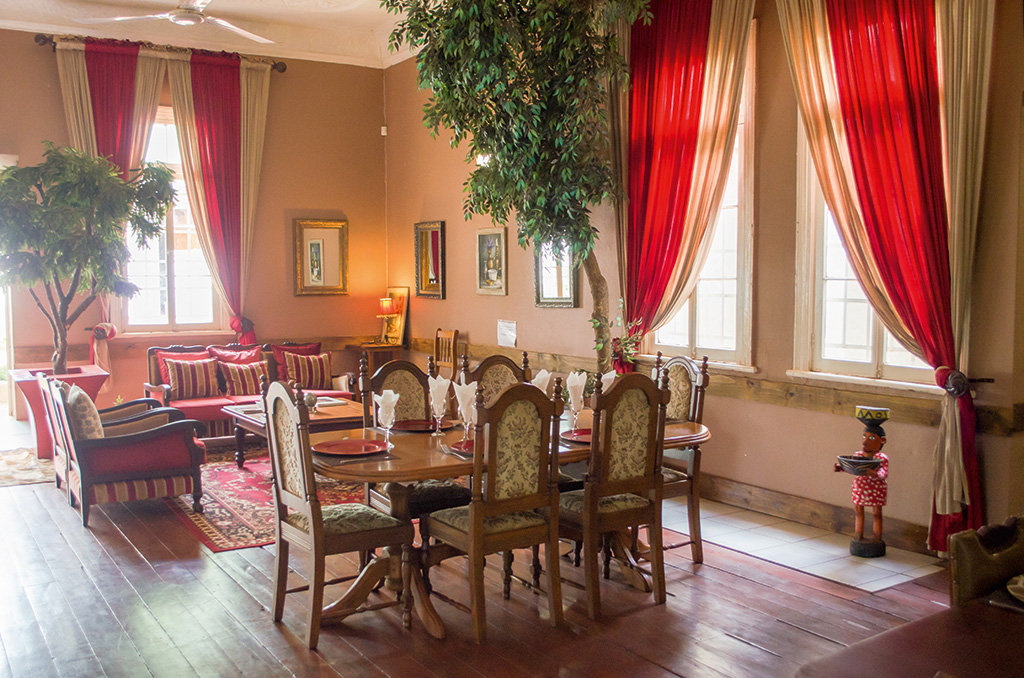
History stands still in the hotel’s dining room, down to the furniture of the era. One almost feels as though a jacket and tie should be worn, if it weren’t so hot!
This all went to ruin when the Witwatersrand reefs proved more gold-rich. The hotel is the only remaining building that serves any purpose, and there, the history lives on – carved into the bar counter, in the trunks of trees and the spooks in the cellar.
Stay Here
Leydsdorp Hotel
from R550 pp. 082 461 6433
Kimberley
Death on the diamond mines and Anglo-Boer battlefields left the historic town of Kimberley with no fewer than 158 known haunted sites, from houses to cemeteries to the old Kimberley Club. There’s the librarian who swallowed arsenic, and still takes his 4pm tea at the Africana library, and tosses odd books from the shelves. The ghost at Rudd House, said to be one of the most eerie places in South Africa, haunts the upstairs balcony of the old mansion. And at the Magersfontein battlefield, where the Boers were victorious in 1899, you may hear the phantom sounds of a lonely Scottish piper, mourning his fallen brethren. You can visit these haunts on an after-dark guided tour of the Kimberley ghost trail. Kimberley Ghost tours, contact 083 732 3189 for updated prices.
Nottingham Road
At the turn of the century, Nottingham Road Hotel in the KZN Midlands, was a popular stop for British soldiers. And it was here that Charlotte plied her trade as a lady of the night. The details of her death are sketchy but in one way or another, she died after falling from the balcony. These days she haunts room 10, where she removes the pictures off walls and folds the clothes of sleeping guests. Charlotte has a particular talent for flower rearranging, but only reveals herself to a special few. Stay here from R710 pp. 033 266 6151

Nottingham Road Hotel, 1898
Prince Albert
Take a stroll through the Fransie Pienaar Museum, where windows are heard opening and closing without explanation and the sound of phantom horses can be heard trotting down the street. Be sure to book a ghost walk with the Story Weaver, Ailsa, a local with all the dirt on Prince Albert’s ghosts and a passion for its history. The ghost tour doubles as a historical ramble, and while spooky, is suitable for children. R80 per adult, R40 per child. 023 541 1211, storyweaver.co.za
Matjiesfontein
The mischievous ghosts of Matjiesfontein’s Lord Milner Hotel are said to be a friendly lot. Listen for the shuffle of cards on the second floor where Kate, a nurse, was known to play card games with her ailing patients. Today the room is labelled Kate’s Card Room.’ Request to stay in it, if you dare. Then there’s Lucy, who never checked out of her room, and the ghosts of British soldiers who haunt the main staircase, spotted occasionally by guests and hotel staff. Stay here From R525 pp sharing. 023 561 3011, matjiesfontein.com
Pilgrim’s Rest
Where there be gold, there be ghosts, it seems. And Pilgrim’s Rest is home to many a restless spirit. The Barry mansion, now a museum, is said to be haunted by a young girl and visitors have seen a doll’s pram move around mysteriously. Sometimes the smell of cooking wafts from the house, despite it not having been lived in for decades. In the cemetery, many of the graves from the gold-mining days are unnamed, but south-facing graves are a dead giveaway that a criminal is buried beneath. On a guided after-dark ghost tour you’ll visit Alanglade House, built in 1915 as a home for the mine manager and his family, and see the ‘Robber’s grave’. Contact Brunmer Tours at the information centre for details. 082 522 1958
Written by: Lauren Dold









